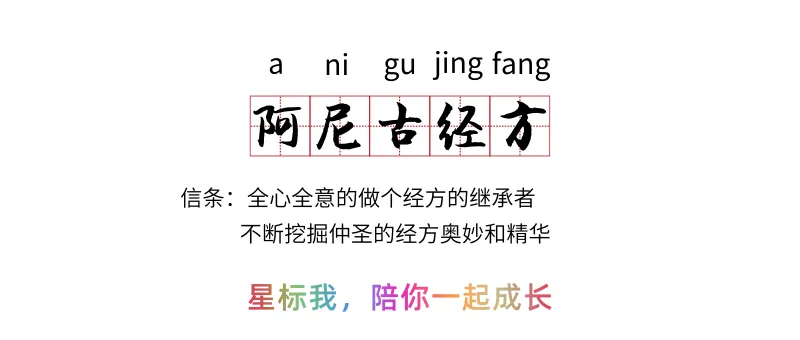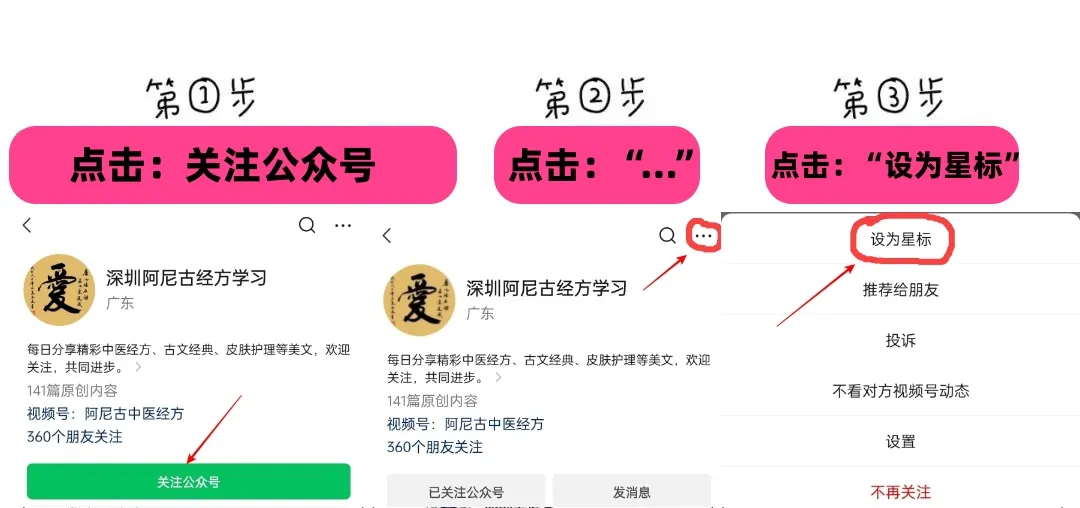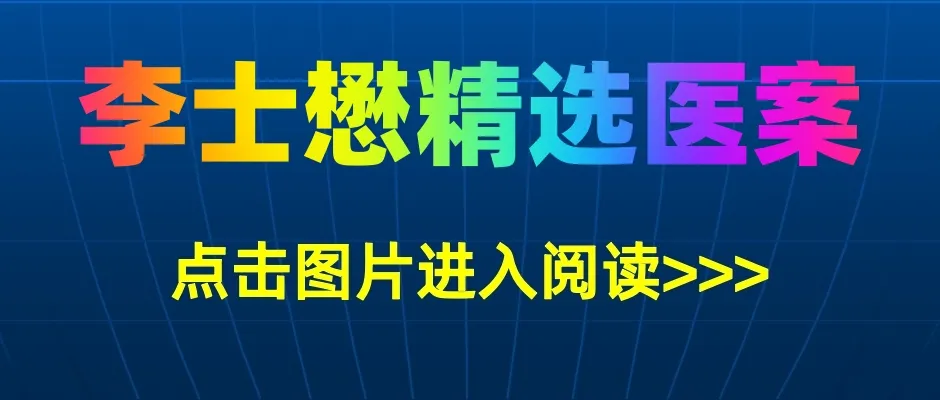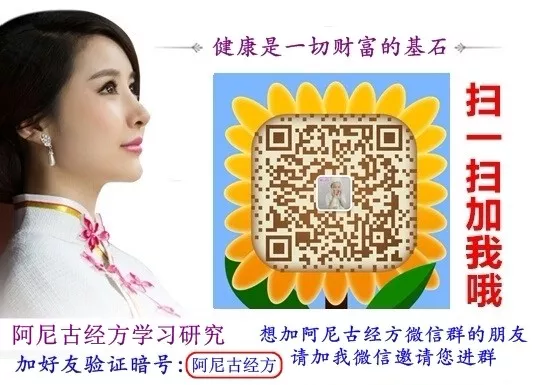
Understanding Pulse Diagnosis: Floating Pulse (Part 2)Continuing from the previous issue:Understanding Pulse Diagnosis: String Pulse (Part 1) Floating PulseMedical sage Zhang Zhongjing and many later physicians have discussed that floating pulse indicates exterior conditions, but this is not entirely accurate. Teacher Li Shimao believes that floating pulse has two meanings, one refers to the concept of location, where any pulse that can be diagnosed lightly, regardless of its size, speed, or strength, as long as the pulse position is at the floating level, is called floating pulse, such as xū mài (deficient pulse), wēi mài (minute pulse), hóng mài (surging pulse), gé mài (leather pulse), etc. The other refers to a strictly defined independent pulse pattern, namely strong when lifted, weak when pressed. To distinguish between the two, the former can be called “pulse floating,” while the latter is referred to as “floating pulse.”Case 1 Wang, female, 63 years old, initial diagnosis on May 13, 2013. In August 2008, she experienced a cerebral hemorrhage, diagnosed with cerebral infarction in June 2012, and had another cerebral hemorrhage on April 5, 2013. Currently, she has numbness in the left limbs, limited movement, numbness in the left face, left eye blindness, and numbness in the entire back of the head, with headaches. After medication, her blood pressure is 120/80 mmHg, with high blood sugar, taking hypoglycemic medication, speech is normal, and bowel movements are regular.Left pulse is slightly stringy and rapid, while the right pulse is stringy, slippery, and rapid, with a strong cun pulse.Diagnosis: Kidney water deficiency, heart fire excess.Formula:Di Huang Yin Zi (Rehmannia Decoction).Shu Di Huang (Rehmannia Root) 15g, Shan Zhu Yu (Cornus Fruit) 15g, Shi Hu (Dendrobium) 15g, Mai Dong (Ophiopogon) 15g, Wu Wei Zi (Schisandra) 6g, Shi Chang Pu (Acorus) 6g, Yuan Zhi (Polygala) 9g, Fu Ling (Poria) 15g, Rou Cong Rong (Cistanches) 12g, Sheng Gui Jia (Raw Turtle Shell) 30g (pre-boiled), Sheng Bie Jia (Raw Soft-Shelled Turtle Shell) 30g (pre-boiled), Sheng Long Gu (Raw Dragon Bone) 30g (pre-boiled), Sheng Mu Li (Raw Oyster Shell) 30g (pre-boiled). Fourteen doses, decocted in water.Second diagnosis on June 3, 2013: After medication, strength in the limbs increased, headaches and blindness improved, numbness unchanged, tongue is pale red, with thin white coating, pulse is stringy, slippery, and rapid, with reduced strength when pressed, and a rapid pulse at the chi position.Diagnosis: Kidney water deficiency with excess fire, spleen and lung qi deficiency.Formula: Add qi tonifying and wind-resolving herbs to the above formula. Add Sheng Huang Qi (Raw Astragalus) 15g, Tian Ma (Gastrodia) 15g, Di Long (Earthworm) 15g, Quan Xie (Scorpion) 10g, Wu Gong (Centipede) 10 pieces, Tao Ren (Peach Kernel) 15g, Hong Hua (Safflower) 15g.Third diagnosis on June 17, 2013: Limb strength increased, able to walk with assistance, numbness reduced, still experiencing head tightness and unclear vision, tongue is pale red and deviated to the right, left pulse is deep, stringy, rough, and rapid, yin and yang pulses are equal, right pulse is floating, stringy, with deep and rapid guan and chi pulses.Diagnosis: Kidney water deficiency, heart fire excess, with blood stasis. Remove Huang Qi (Astragalus), add Yan Zhi Mu (Salted Anemarrhena) 6g, Salted Huang Bai (Phellodendron) 6g, Huang Niu Xi (Achyranthes) 10g, Chi Shao (Red Peony) 12g.Note: For sequelae of cerebral hemorrhage, Western medicine considers it irreversible and has no treatment methods, but Traditional Chinese Medicine (TCM) does not share this view. TCM emphasizes syndrome differentiation and treatment. For sequelae of cerebral hemorrhage, there are no specific medications; treatment plans must be determined based on the patient’s pulse and symptom presentation, so each patient’s prescription will be different. Patients often have hemiplegia, but after TCM treatment, there is still a possibility of relief, as is the case with this patient. At the initial diagnosis, the patient presented with left hemiplegia, the pulse was diagnosed as left stringy and slightly rapid, with weak yang at the chi position. Yang pulse refers to the cun and guan pulses, while weak yang indicates insufficient yang qi in the upper jiao, chi pulse being rapid indicates kidney water deficiency below, with excess fire unable to settle, leading to chaotic movement; the right pulse is stringy, slippery, and rapid, with a strong cun pulse. This indicates excess heart fire. The left pulse is weak in yang, while the right cun pulse is strong, creating an inconsistency in the pulse between the two hands. How to judge? First, one should assess the deficiency and excess by checking the strength of the pulse when pressed. Although the right cun pulse is slightly strong, the left pulse is weak when pressed, indicating floating yang above. It should not be treated with bitter cold herbs like Huang Qin (Scutellaria) and Huang Lian (Coptis) to clear and drain, but rather with Gui Jia (Turtle Shell), Long Gu (Dragon Bone), Mu Li (Oyster Shell), and Bie Jia (Soft-Shelled Turtle Shell) to nourish yin and subdue yang. Therefore, the prescription of Di Huang Yin Zi nourishes yin and tonifies the kidney, removing spicy and hot Gui Zhi (Cinnamon Twig) and Fu Zi (Aconite) to prevent further damage to kidney yin, and assisting with San Jiao (Three Herbs) to subdue floating yang. In the second diagnosis, symptoms improved, indicating the medication was effective. The pulse in both hands became consistent, and the strong right cun pulse was balanced, allowing for the addition of Huang Qi to tonify qi, as the chi pulse remains rapid, thus not removing San Jiao, as this is no longer about subduing floating yang, but rather about subduing excess fire. Additionally, Di Long, Quan Xie, and Wu Gong were added to calm wind and stop spasms. In the third diagnosis, symptoms continued to improve, with yin and yang pulses equal. The left pulse was deep, stringy, rough, and rapid, indicating blood stasis obstructing the channels, while the right cun pulse was floating, stringy, with deep and rapid guan and chi pulses indicating kidney water deficiency, with excess fire transforming into wind. Therefore, remove Huang Qi, add Huang Niu Xi (Achyranthes) to guide fire downward, tonifying liver and kidney, Salted Zhi Mu (Anemarrhena) and Huang Bai (Phellodendron) to clear excess fire, and Chi Shao (Red Peony) to clear heat, cool blood, and invigorate blood circulation.Related Reading:Clinical Applications of Di Huang Yin ZiCase 2 Zhang, female, 46 years old, initial diagnosis on August 15, 2011. Hypertension for over 10 years, with a maximum blood pressure of 210/100 mmHg, immediate blood pressure at 130/90 mmHg, feeling heavy in the chest, prone to sighing, dizziness, and chest tightness, pulse is deep, stringy, rough, and slightly tight.Method: Disperse cold and relieve muscle tension.Formula:Chuan Xiong Cha Tiao San (Ligusticum Chuanxiong Tea Powder) with added antispasmodic herbs.Chuan Xiong (Ligusticum) 8g, Man Jing Zi (Vitex) 9g, Jing Jie Sui (Schizonepeta) 7g, Ma Huang (Ephedra) 6g, Fang Feng (Siler) 8g, Xiao Xin (Asarum) 6g, Quan Xie (Scorpion) 10g, Qiang Huo (Notopterygium) 8g, Dang Gui (Angelica) 12g, Wu Gong (Centipede) 10 pieces, Tao Ren (Peach Kernel) 12g, Hong Hua (Safflower) 12g. Seven doses, decocted in water.Second diagnosis on August 22, 2011: Immediate blood pressure at 130/95 mmHg, poor memory, incoherent speech, stiff neck, tightness in the heart, pulse is deep, stringy, tight, and slightly rapid. The above formula addsTu Bie Chong (Earthworm) 12g, Ge Gen (Pueraria) 15g, Shui Zhi (Leech) 10g, Yi Yi Ren (Coix) 15g, Shan Zha (Hawthorn) 12g. Seven doses, decocted in water.Third diagnosis on September 5, 2011: Immediate blood pressure at 120/80 mmHg, poor memory, dizziness, chest tightness, pulse is deep, stringy, slippery, and rapid.Diagnosis: Phlegm heat generating wind.Formula:Huang Qin (Scutellaria) 9g, Ban Xia (Pinellia) 10g, Zhu Ru (Bamboo Shavings) 10g, Tian Ma (Gastrodia) 15g, Huang Lian (Coptis) 10g, Dan Nan Xing (Arisaema) 10g, Zhi Shi (Bitter Orange) 9g, Gou Teng (Uncaria) 15g, Zhi Zi (Gardenia) 10g, Gua Lou (Trichosanthes) 20g, Shi Chang Pu (Acorus) 9g, Xia Ku Cao (Selfheal) 18g, Tu Bie Chong (Earthworm) 10g, Shui Zhi (Leech) 10g. Seven doses, decocted in water.Fourth diagnosis on October 31, 2011: Immediate blood pressure at 130/80 mmHg, dizziness improved, no chest tightness observed, pulse is deep, stringy, tight, with two cun pulses floating and stringy.Diagnosis: Kidney deficiency with cold congealing, liver wind disturbing upward.Formula:Sheng Long Gu (Raw Dragon Bone) 30g, Sheng Mu Li (Raw Oyster Shell) 30g, Zhi Bie Jia (Processed Soft-Shelled Turtle Shell) 30g, Gui Jia (Turtle Shell) 30g, Shu Di Huang (Rehmannia Root) 15g, Shan Zhu Yu (Cornus Fruit) 15g, Lu Jiao Jiao (Deer Antler Glue) 15g, Ma Huang (Ephedra) 6g, Huang Niu Xi (Achyranthes) 12g, Tian Ma (Gastrodia) 15g, Quan Xie (Scorpion) 10g, Wu Gong (Centipede) 10 pieces, Ba Jiao Tian (Morinda) 12g, Rou Cong Rong (Cistanches) 12g, Gui Zhi (Cinnamon Twig) 6g, Zhi Gan Cao (Honey-Fried Licorice) 9g, Pao Fu Zi (Processed Aconite) 6g, Gui Zhi (Cinnamon Twig) 12g, Xiao Xin (Asarum) 6g. Seven doses, decocted in water.Note: In this case, the initial diagnosis showed a deep, stringy, rough, and slightly tight pulse, indicating that the disease is located internally, with stringy indicating qi stagnation, rough and strong indicating blood stasis, and tight indicating cold evil obstructing. Therefore, this hypertension is diagnosed as cold congealing and blood stasis, with the treatment principle being warming yang, dispersing cold, invigorating blood, and resolving stasis. The prescription of Chuan Xiong Cha Tiao San disperses cold and invigorates blood, as “only wind can reach the top of the head,” thus using Qiang Huo and Fang Feng to guide the herbs, combined with Quan Xie and Wu Gong to calm wind and stop spasms, and Tao Ren and Hong Hua to invigorate blood and resolve stasis. In the second diagnosis, there was no significant relief of symptoms, but the pulse remained unchanged, so the original prescription was maintained, adding Ge Gen to relieve neck stiffness, and Tu Bie Chong and Shui Zhi to enhance the ability to invigorate blood and resolve stasis. In the third diagnosis, blood pressure was controlled within the normal range, but the pulse changed to deep, stringy, slippery, and rapid. Although the previous formula was effective, it could not continue to be taken, as the pulse change indicates a change in the condition, thus requiring a change in the prescription. Deep, stringy, slippery, and rapid pulse indicates phlegm heat accumulating internally, so the prescription of Huang Lian Wen Dan Tang clears heat and transforms phlegm, combined with Tian Ma, Gou Teng, and Xia Ku Cao to calm the liver and subdue yang. In the fourth diagnosis, blood pressure still fluctuated, the pulse changed to deep, stringy, tight, with two cun pulses floating and stringy. This floating pulse should be analyzed carefully; the patient has been treated for over two months, with recurring symptoms. At this point, the floating pulse indicates whether the righteous qi is recovering or if liver wind is disturbing. It is necessary to carefully consider whether the floating pulse has a stomach, spirit, or root. Since this case was recorded during my follow-up, I have had experience with this pulse pattern. This floating pulse can be seen with light pressure, but when pressed deeply or lightly, the pulse is weak, so it should not be interpreted as the righteous qi recovering, but rather as liver wind disturbing. Therefore, the prescription of San Jiao Fu Mai Tang nourishes yin, subdues yang, and calms the liver, while Ma Huang Fu Zi Xiao Xin Tang warms yang and disperses cold.
Related Recommendations:
Recommended TCM Reading List Issue 1
Recommended TCM Reading List Issue 2
WeChat has been revamped!!!
Now, encountering our articles is all about fateEveryone remember to “star” and “follow” Anigu’s classic prescriptions
Copyright Statement
-
This articleis excerpted from “Understanding Pulse Diagnosis with Teacher Li Shimao”
-
Editor-in-Chief: Wang Sipin; Edited by Liu Jifang
-
Copyright belongs to the relevant rights holders, and the purpose of reprinting is to disseminate TCM knowledge. If you like Teacher Li’s works, please purchase the original books. If there are any improper uses, please feel free to contact us.
I Submission email [email protected]
【Li Shimao】’s Wonderful Medical Discussions【Click on the text in the table to read directly】
Reflections on TCM Education |
Positioning TCM as Practical Medicine |
| Reflections on Integrating TCM and Western Medicine | Review and Reform of TCM Education |
| Insights from Professor Qin Bowe’s Lectures |
Discussing the Five Movements and Six Qi
Combining Disease Differentiation and Syndrome Differentiation
Discussing Syndrome Differentiation and Treatment (Syndrome)
Discussing Syndrome Differentiation and Treatment (Treatment)


